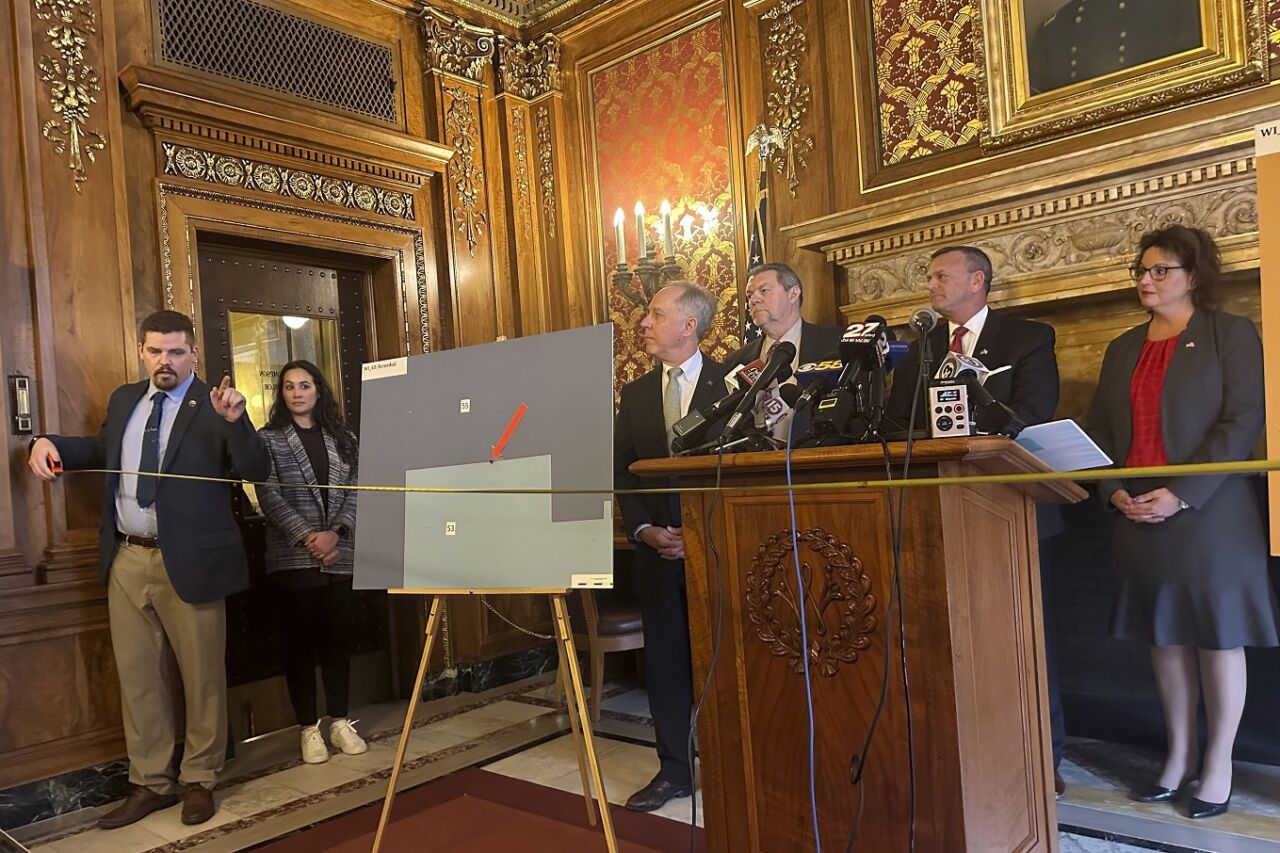Politics
Wisconsin’s Democratic governor promises to veto last-ditch Republican redistricting effort

MADISON, Wis. (AP) — Wisconsin Democratic Gov. Tony Evers promised to veto a redistricting proposal that the Republican-controlled Assembly passed on Wednesday and that largely mirror maps he proposed, but with changes that would reduce the number of GOP incumbents who would have to face one another in November.
Wisconsin state Assembly Rep. Jill Billings will be on La Crosse Talk PM from 5-6 p.m. Thursday night. Listen on the WIZM app, online here, or on 92.3 FM / 1410 AM / 106.7 FM (north of Onalaska). Find all the podcasts here or subscribe to La Crosse Talk PM wherever you get your podcasts.
Evers’ veto will leave it to the Wisconsin Supreme Court to install the state’s new maps.
The liberal-controlled state Supreme Court last month tossed the current Republican-drawn maps as unconstitutional. The court said it would draw new maps unless the Legislature and Evers agreed to ones first.
The political stakes are huge for both sides in the presidential battleground state, where Republicans have had a firm grip on the Legislature since 2011 even as Democrats have won statewide elections, including for governor in 2018 and 2022.
Republican Assembly Speaker Robin Vos, who has long argued for keeping the current lines the same, said Tuesday night that he would happily pass maps proposed by Evers. But on Wednesday, Vos defended passing the same maps the Senate did on Tuesday, which make some changes to the Evers map.
“We’re trying to make the map slightly a little bit more fair,” Vos said.
Evers posted on the social media platform X that he would veto the maps because, “Moving legislative district lines so GOP-gerrymandered incumbents get to keep their seats is just more gerrymandering.”
Democratic Minority Leader Greta Neubauer said Republicans were simply trying to hold onto their majority.
“Drawing a map to protect incumbents is wrong, and it’s not what the people of Wisconsin want from their elected officials,” she said.
Evers did not engage with Republicans on their last-ditch effort to approve a map that might get his signature.
Vos said at a news conference that Evers would not work with them on it. But he said the maps were so close to what Evers proposed, Democrats should get behind them.
“We have met them 99% of the way on the maps that they asked for,” Vos said. “What we’re actually doing is making miniscule changes to gerrymandered Evers maps.”
Vos said Republicans were not trying to get around the court ordering a map, but that the Legislature was instead doing its job to pass a plan.
“We are not trying to circumvent anything,” Vos said.
Republican lawmakers who would be drawn out of their current districts under the Evers map pleaded their case at the news conference. State Rep. Nate Gustafson, of Fox Crossing, held a tape measure extended to 15 feet.
“This is how far they drew me out of the 55th,” Gustafson said.
He and the others said they intended to run for reelection in their new districts if those are the maps adopted.
Vos said under the Evers maps, 30 Republicans would be paired against one another compared with just two Democrats.
“The surgical nature that was done on these districts was certainly done to accommodate Democrat candidates,” Vos said.
The Assembly passed it 63-35, with all Republicans in support and Democrats against.
The Legislature raced to pass maps ahead of the Feb. 1 deadline for consultants hired by the Wisconsin Supreme Court to submit their recommendations for new boundary lines. They were reviewing six maps submitted separately by Evers, Republicans, Democrats and others. They could recommend one of those maps, or their own. It would then be up to the liberal-controlled court to order the maps, unless the Legislature and Evers can agree first.
Republicans have a 22-11 supermajority in the Senate and a 64-35 majority in the Assembly, two seats shy of a supermajority. They have built their majorities under maps they first drew in 2011.
Under the Evers map, Republicans would have a 53-46 majority in the Assembly, and a 17-16 edge in the Senate, based on an analysis by Marquette University Law School research fellow John D. Johnson. His analysis used a statistical model to predict the results of the 2022 state legislative election had they taken place in the newly proposed districts.
Democrats would fare better under other submitted maps the court is considering, which is fueling the Republican push to adopt the Evers maps.
The legislative machinations in Wisconsin come as litigation is ongoing in more than dozen states over U.S. House and state legislative districts that were enacted after the 2020 census. National Democrats last week asked the Wisconsin Supreme Court to take up a challenge to the state’s congressional districts, but the court has yet to decide whether to take the case.


Walden
January 25, 2024 at 11:18 am
Now the Dems want to challenge the congressional district map. That district map was previously approved by Evers.
Progressives using the courts to ruin the state, just as they did in California and Illinois.